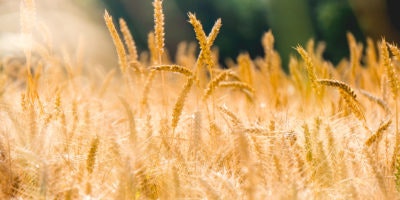In the world of wine, the term cuvée can be used in several different ways. Most often though, it represents a blend of the highest quality from a particular producer. That concept is something which should sound familiar to whiskey drinkers, whether they enjoy drinking blended Scotch or Japanese whisky, for instance. Now though, the term is showing up in the whiskey world, offering an opportunity to explore what a whiskey cuvée means.
Inspiration from the Wine World
I first heard the term “whiskey cuvée” when visiting Ireland’s Waterford Distillery. Founder Mark Reynier spent several decades working in wine, and he wanted to apply what he learned about the production of great Bordeaux and Champagne wines — the creation of a house’s Grand Vin — to single malt whiskey.
His vision was to focus on barley variety and terroir, showcasing differentiation between both. But he also wanted to eventually cobble together the disparate components into a singular product representative of its full flavor range and overall capability. In 2020, the distillery released a limited 1,500-bottle offering dubbed 1st Cuvée: Pilgrimage in 2020, and is following up on that this summer with its first flagship, The Cuvée, a full market release with over 50,000 bottles.
For Reynier, a whiskey cuvée refers to “a desired style, a type made up from several smaller constituents,” he says. “Cuvée has a creative association rather than the prosaic, workmanlike, even negative inference of the old term vatting. The whole, greater than simply the sum of its parts.”
He uses the analogy of an audio mixing deck, and adjusting the many levers just so in order to create a fuller and more finely-tuned sound. Alternatively, he conjures up a Michelin-starred chef carefully weaving together flavors into a dish that far exceeds what she started with as ingredients. “Bringing together the individual flavor profiles, layer upon layer, for their magical interaction to take place and create a flavor profile that is even more compelling than the individual ingredients,” Reynier says. “That is exactly what we have set Waterford up to do: our pantry or domain is our warehouse of 97 different Single Farm Origins, each with their own specific terroir-defined flavor profile.”
Waterford Whisky at the Waterford Farm / Photo Credit: Waterford Distillery
Highlighting the Casks
At Virginia Distillery Co., they emphasize the use of what they call their whiskey cuvée casks. These are STR — or shave, toast, re-char — casks pioneered by the late Dr. Jim Swan. These casks were and deployed at other distilleries he consulted with, such as Kavalan. “The casks originally held premium red wine in Europe and were given a second life by shaving the interior to a precise layer where there was un-toasted wood, but still wine soaked,” says Virginia Distillery CEO Gareth H. Moore. “We use the term ‘cuvée’ to highlight their heritage as European wine casks, utilizing a term that speaks to a vat or tank of a special quality.”
Interestingly, the production of their flagship Courage & Conviction single malt is then reminiscent of what we’ve seen in regards to the creation of a cuvée. The flagship is a blend of whiskeys from three different types of casks — bourbon, sherry and cuvée/STR — each also available as a standalone product. “We always intended for the flagship product to be a blend of casks in an effort to provide layers of depth that interact harmoniously,” Moore says. “We like to think that while we deem the STR casks as ‘cuvée,’ the flagship Courage & Conviction whisky reflects a special quality of our house style.”
Art of Blending
While the word choice of ‘cuvée’ is taking its first turns in whiskey, the ethos behind it has long existed. Look no further than products such as top tier blended Scotch, or the two major Japanese whisky houses, Suntory and Nikka, where the art of blending is the prized pinnacle of the production process.
One modern master of the blending arts is Compass Box’s founder and lead whiskymaker John Glaser. “I have long been inspired by blending as a platform for creativity and as a way to create complexity and balance — in both wine and whisky,” he says. “One of my wine heroes, Gerard Chave, created some of the world’s greatest wines in the Hermitage vineyards of the Northern Rhone. He used to say: ‘The ideal model of Hermitage is a blend of wines from different soils.'”
Regardless of the components used in a particular expression, there’s a consistent goal with Glaser’s blends. Across a diverse product line, he strives to create a unified house style. “We are looking for palate feel as well as aroma and flavor,” he says. Specifically, he wants his whiskies to deliver softness and sweetness on the palate.
Waterford Whisky at the Waterford Farm / Photo Credit: Waterford Distillery
Like A Fine Wine
Clearly, the idea of bringing together multiple components, dialing them up and down, and seeing how they interact with and improve one another, is not new to whiskey. However, by focusing on different barleys in place of different grapes, and by exploring the notion of terroir in spirits, Waterford’s cuvée production is perhaps the most analogous to wine that the spirits world has yet seen. “It’s about how to obtain the most profound flavor complexity possible, the difference between the ordinary and the legendary,” Reynier says. “If it’s good enough for [legendary first-growth Bordeaux estates] Lafite and Latour it’s good enough for me.”
Ready to explore a whiskey cuvée?
With Distiller, you’ll always know what’s in the bottle before you spend a cent. Rate, Review, and Discover spirits. Head on over to Distiller, or download the app for iOS and Android today!
Want to enjoy Distiller ad-free plus exclusive discounts, giveaways, features and other perks? Join Distiller Pro today to support the Distiller platform and keep ads off of your screen.


